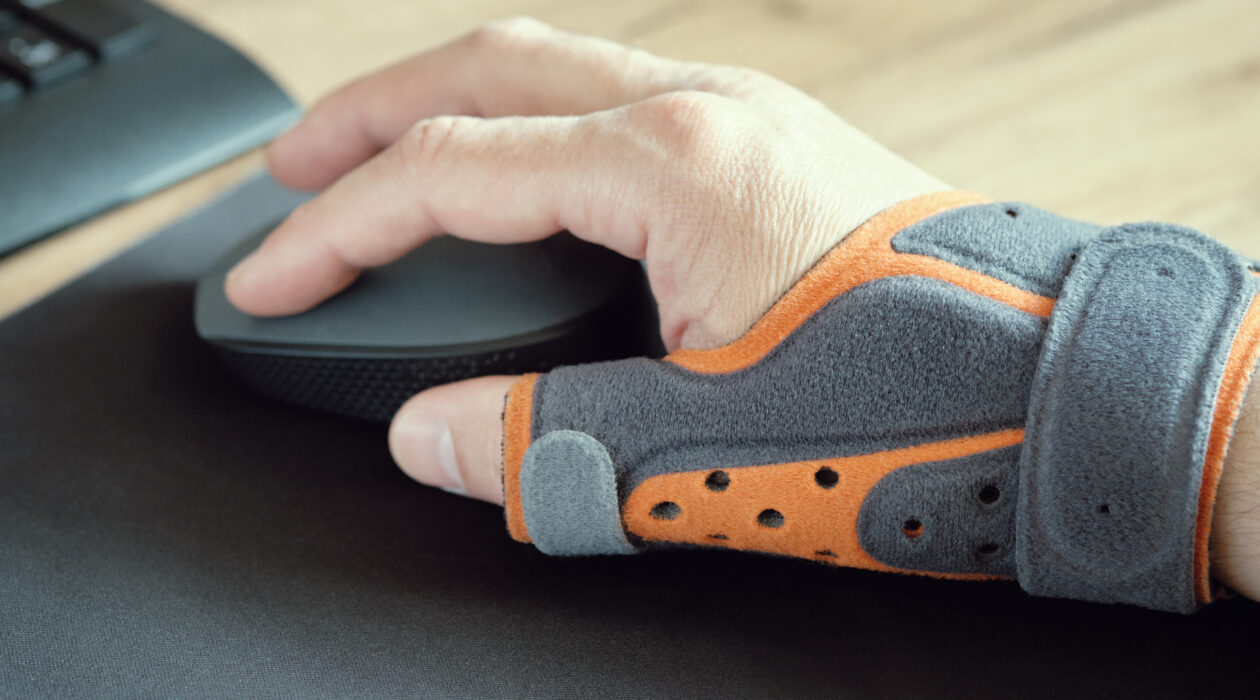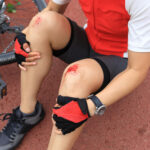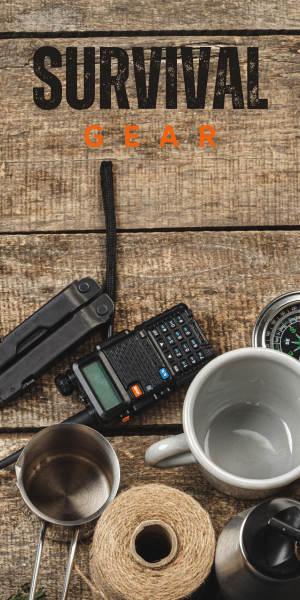Introduction to Finger Splint
Finger splints are essential tools in the realm of hand therapy and injury recovery. They play a pivotal role in the healing process of various finger injuries.Their use is widespread not only among athletes who frequently suffer from finger injuries but also among the general population. Understanding the importance and functionality of a finger splint is key for anyone who might experience a finger injury.
What is a Finger Splint?
A finger splint is a medical device used to immobilize and protect an injured finger to facilitate healing. It works by keeping the finger in a fixed position, which helps in maintaining proper alignment of the bone and soft tissues, thereby reducing pain and preventing further injury. Finger splints are commonly used for injuries such as fractures, dislocations, sprains, and tendon injuries. They are also employed in the treatment of medical conditions like arthritis or trigger finger, where immobilization helps in reducing inflammation and pain.
Finger splints come in various sizes and designs, ranging from simple metal or plastic rods to more complex adjustable devices, catering to different types of injuries and comfort levels. The use of a finger splint is often a critical component in the recovery process from finger injuries, ensuring that the finger heals correctly and regains its functionality.
Types of Finger Splints
Finger splints come in various designs, each tailored to treat specific types of finger injuries. Understanding these different finger splint types is crucial for effective injury management.
Gutter Splint:
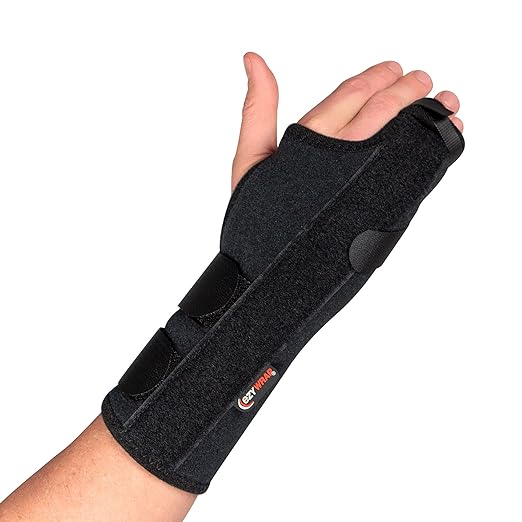
This type of splint is designed to immobilize and protect the injured finger. It typically covers one side of the finger and the adjacent hand area, providing support and alignment. Gutter splints are often used for fractures or injuries to the middle or distal phalanges.
Ulnar Gutter Splint:
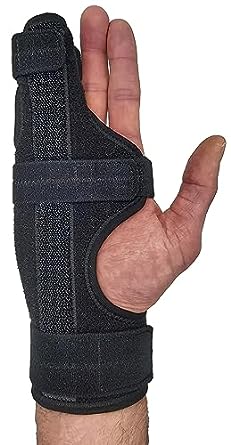
The Ulnar Gutter Splint is specifically designed to immobilize and support injuries to the ring and little fingers. It extends from the forearm to the fingertips, stabilizing the ulnar side of the hand and wrist, and is commonly used for fractures or severe sprains in these fingers.
Two-Finger Splint:
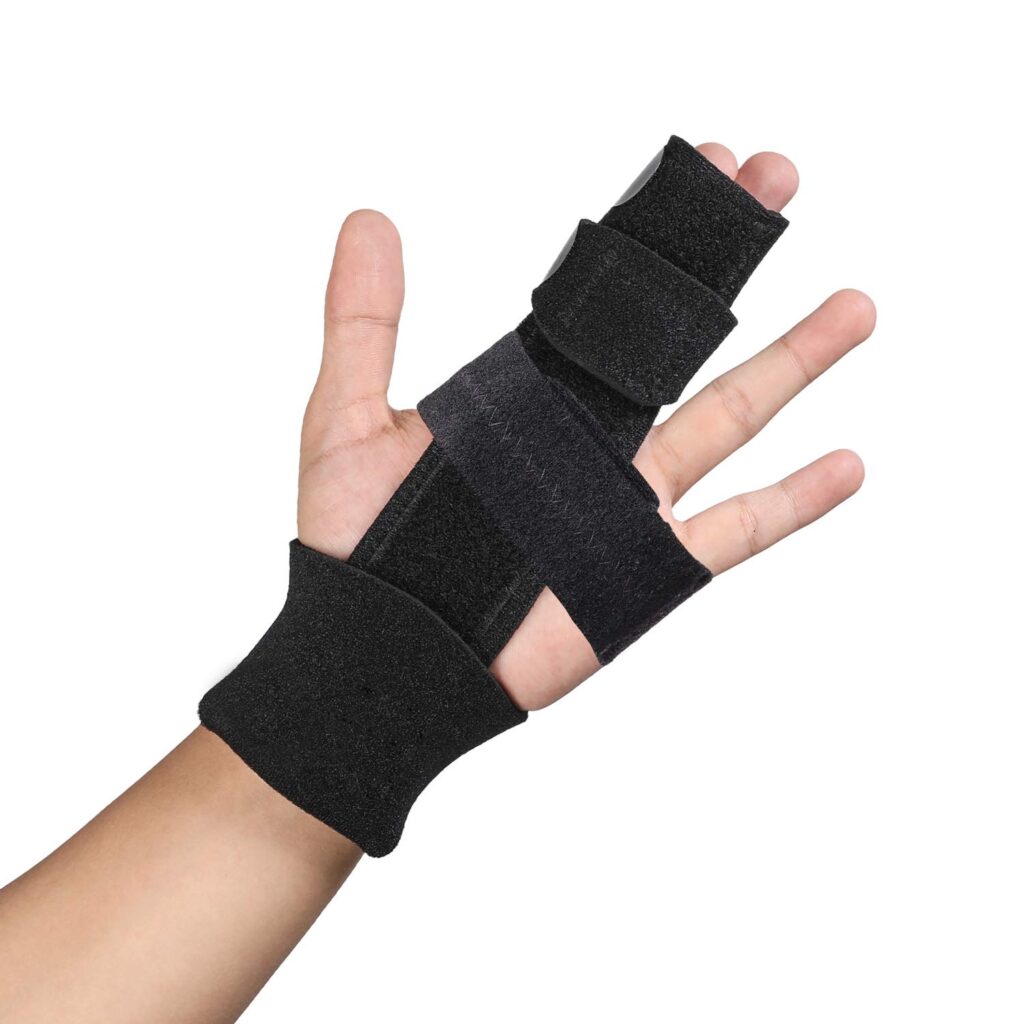
As the name suggests, this splint is used to immobilize two fingers simultaneously. It’s particularly useful when adjacent fingers are injured or when there’s a need to immobilize one finger by anchoring it to another.
Stack Splint:
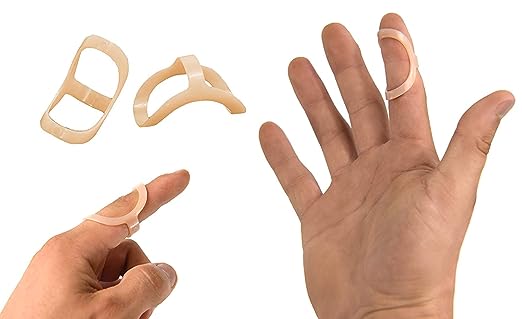
Stack splints are specifically designed for injuries to the distal phalanx, commonly used for mallet finger injuries. They keep the end joint of the finger in an extended position to allow for proper healing.
Dynamic Splint:
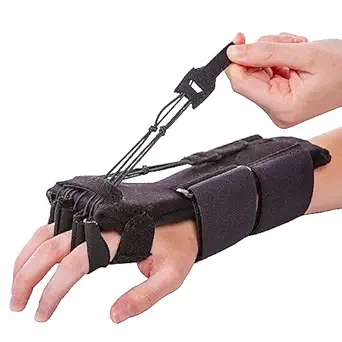
Dynamic splints are used for more complex injuries. They incorporate springs or elastic bands to provide a gentle, continuous force to the injured finger, aiding in the recovery of movement and flexibility. These are often used in rehabilitation for tendon injuries or post-surgery recovery.
Thumb Spica Splint:
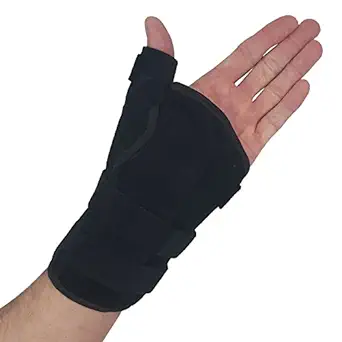
This type of splint is designed to immobilize the thumb. It extends from the wrist to the thumb, immobilizing the thumb’s metacarpophalangeal and interphalangeal joints. Thumb Spica splints are commonly used for thumb fractures, sprains, or conditions like De Quervain’s tenosynovitis.
Each of these finger splint types plays a specific role in the healing process, offering the necessary support and protection to ensure effective recovery from various finger injuries.
FAQ :
What does a splint do for a finger?
A finger splint stabilizes and immobilizes an injured finger, promoting healing by holding it in a fixed position. It’s used for various finger injuries, including fractures, dislocations, and ligament or tendon damage. By preventing movement, it reduces stress on the injured area, aiding recovery while minimizing pain and inflammation.
How do you splint your finger at home?
To splint your finger at home, first select an appropriate splint that fits your injury type. Place the splint on the injured finger, ensuring it immobilizes the joint above and below the injury. Secure it gently but firmly with tape or adjustable straps, making sure not to impede circulation. For comfort and protection, consider padding between the splint and your skin. Always follow your healthcare provider’s instructions for correct positioning and duration.
What do you wear a finger splint for?
Finger splints are worn for various conditions, including mallet finger, sprained fingers, certain types of broken fingers, finger dislocations, and osteoarthritis. They provide support and protection to the injured or affected finger, helping in stabilizing and immobilizing it for proper healing. Splints also assist in reducing pain and preventing further injury or strain during activities that require repetitive finger movements.
Should you wear a finger splint for arthritis?
Wearing a finger splint can be beneficial for arthritis, particularly to immobilize and support affected joints, thereby relieving pain and discomfort. It helps in maintaining proper alignment and reducing stress on the arthritic joint. However, the decision to use a splint and the type of splint should be made in consultation with a healthcare professional, considering the specific type and severity of arthritis, as well as individual needs
In the End :
Finger splints are invaluable in treating a range of finger injuries, from fractures and sprains to tendon damage. The choice of splint—be it a Gutter, Ulnar Gutter, Two-Finger, Stack, Dynamic, or Thumb Spica—depends on the specific injury and the finger involved. For common injuries like mallet finger, a Stack splint is highly recommended. In cases involving the thumb, such as sprains or De Quervain’s tenosynovitis, a Thumb Spica splint is ideal. For injuries affecting multiple fingers or requiring dynamic movement during recovery, consider a Two-Finger or Dynamic splint. Always consult with a healthcare professional for personalized Finger Splint Recommendations to ensure optimal healing and recovery.

